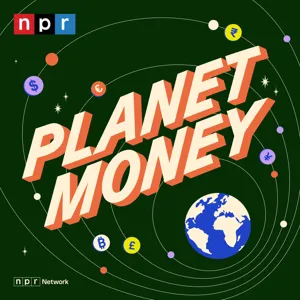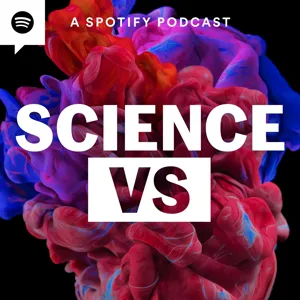Podcast Summary
From factory to syringe: The complex process of producing and distributing COVID-19 vaccines: Producing enough COVID-19 vaccines for the world requires tripling current production capacity, involving various resources and airplanes, and careful planning and execution.
Producing enough COVID-19 vaccines to inoculate the entire world is a massive undertaking that goes beyond just creating the vaccine in record time. It requires increasing global production capacity by at least triple the current amount, involving the production of sand, ice, minerals, and the use of numerous airplanes. This journey from the factory to the syringe in your arm is a complex process that requires careful planning and execution. And even after the vaccine is produced, distributed, and administered, it's important to stay informed about the economy and its challenges through podcasts like Planet Money. So, consider supporting NPR's Economics Podcast with a donation to help make sense of the world around us.
The production of Borosilicate glass vials for storing vaccines: Borosilicate glass is crucial for vaccine stability and effectiveness due to its high shock resistance and ultra-low temperature capabilities. Shot, the largest maker, produces around 11 billion of the 50 billion Borosilicate glass containers annually.
The production of Borosilicate glass vials for storing vaccines is a complex process involving the melting and shaping of sand and various minerals from around the world. Stefan Mark Schmidt, in charge of global sales at Shot, the largest maker of this specialized glass, explains that the glass is crucial for the stability and effectiveness of vaccines, as it can withstand high shock resistance and ultra-low temperatures without shattering. The glass is produced constantly in melting plants and then shipped to cutting plants to be transformed into vials, syringes, and cartridges. The demand for these vials skyrocketed during the COVID-19 pandemic, with vaccine developers securing orders months in advance, knowing they would only need them if their vaccine was successful. Shot produces around 11 billion of the roughly 50 billion Borosilicate glass containers made annually.
Collaborating to Overcome Challenges in Vaccine Production and Distribution: Shot addresses potential vaccine order placement bottlenecks by allowing trades and producing larger quantities of vials, but maintaining the cold chain is crucial for preventing delays in mass vaccinations.
The production and distribution of COVID-19 vaccines require careful planning and collaboration to overcome various challenges. Shot, a vial manufacturing company, is working to address potential bottlenecks by allowing companies to trade vaccine order placements and producing vials in larger quantities. Vials are shipped in pallets and must be kept cold for the vaccines to remain effective, with some requiring ultra-low temperatures. Dry ice is used for transportation between freezers. Despite these efforts, ensuring a steady supply of vials and maintaining the cold chain is crucial to prevent delays in mass vaccinations.
Unique properties of dry ice essential in industries: Dry ice distributors face logistical challenges but remain committed to supplying industries with essential dry ice, even during uncertain demand and timelines.
Dry ice is a unique substance that never melts but instead sublimates, turning directly from a solid to a gas. This property makes it an essential component in various industries, including healthcare, research, and food services. Dry ice distributors like Geo Escobar of Sub-Zero Dry Ice Services play a crucial role in ensuring a steady supply of dry ice for these industries, even during unprecedented demand, such as the recent vaccine distribution efforts. However, the perishable nature of dry ice poses logistical challenges for distributors, requiring specialized storage and transportation methods to prevent excessive sublimation. Despite these challenges, distributors like Geo remain committed to meeting the demands of their clients, even when the specific requirements and timelines are uncertain.
Transporting Vaccines Globally: A Complex Process: Transporting billions of vaccine doses worldwide requires careful planning and collaboration between various sectors and industries, especially the airline industry, to ensure timely and effective distribution.
Distributing vaccines globally is a complex process that involves many steps and players, from manufacturing to transportation. The decision of who gets the vaccine first is a difficult one, as there are various sectors and communities that rely on dry ice for their operations. Once the vaccines are produced, they need to be transported using various modes of transportation, including trucks, cars, and airplanes, and kept at specific temperatures to ensure their efficacy. The airline industry, in particular, faces a massive challenge as it has to transport billions of vaccine doses to over 200 countries around the world, an unprecedented volume in the industry's history. To put it into perspective, if all the vaccines were available at once, it would require 8,000 Boeing 747 planes, each filled with 100 tons of vaccines, to transport them all.
Repurposing passenger planes for vaccine distribution: The global distribution of vaccines involves repurposing passenger planes and utilizing dedicated cargo jets. This provides additional capacity but could lead to longer delivery times and increased costs.
The distribution of vaccines on a global scale is a complex task that involves not only dedicated cargo aircraft but also the repurposing of passenger planes. While Glenn's hypothetical fleet of 8,000 cargo jets is a significant number, it's important to note that not all vaccines will be ready at once and countries may not be able to handle large shipments. Furthermore, with fewer passenger planes flying due to the pandemic, cargo capacity has been reduced, leading to the repurposing of passenger planes for cargo. This has both positive and negative implications for vaccine distribution. On one hand, it provides additional capacity for moving vaccines. On the other hand, it could lead to longer delivery times and increased costs. The most efficient way to distribute vaccines would be through the normal resumption of global passenger flights.
Distributing Vaccines: Challenges and Solutions: The pandemic grounding of passenger planes creates challenges for vaccine distribution, but setting up mass vaccination centers can help minimize the need for shipping supplies to multiple locations, and coordinated efforts and past knowledge will lead to faster and more efficient distribution
Passenger planes play a crucial role in distributing vaccines and other essential supplies to every corner of the world. However, the current grounding of planes due to the pandemic poses challenges to the efficient distribution of vaccines. Once they arrive in a country, there are additional logistical hurdles such as transportation within the country, ensuring the vaccines remain cold, and having enough syringes. To mitigate these challenges, there is a focus on setting up mass vaccination centers to minimize the need for shipping supplies to multiple locations. Despite the complexities, experts are optimistic that with coordinated efforts and the knowledge gained from past vaccine distributions, the world will be able to distribute vaccines faster and more efficiently than ever before. If you'd like to support Planet Money, you can donate to your local NPR member station at donate.npr.org/PlanetMoney. The show was produced by Maria Paz Gutierrez and Alexi Horowitz-Gazi, with editing by Alex Goldmark and Bryant Erstadt. Special thanks to Thomas CUNY and Abigail Jones at the International Federation of Pharmaceutical Manufacturers and Associations for their insights. I'm Alexi Horowitz-Gazi, and I'm Sarah Gonzalez. This is NPR. Thanks for listening.




